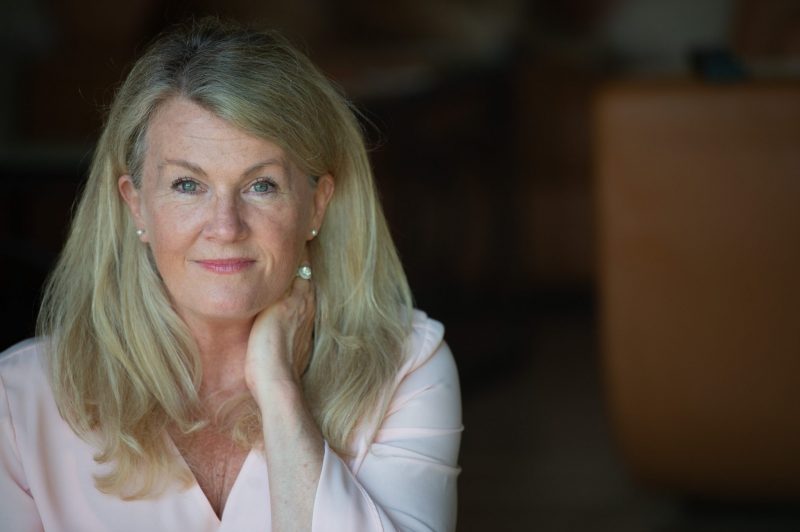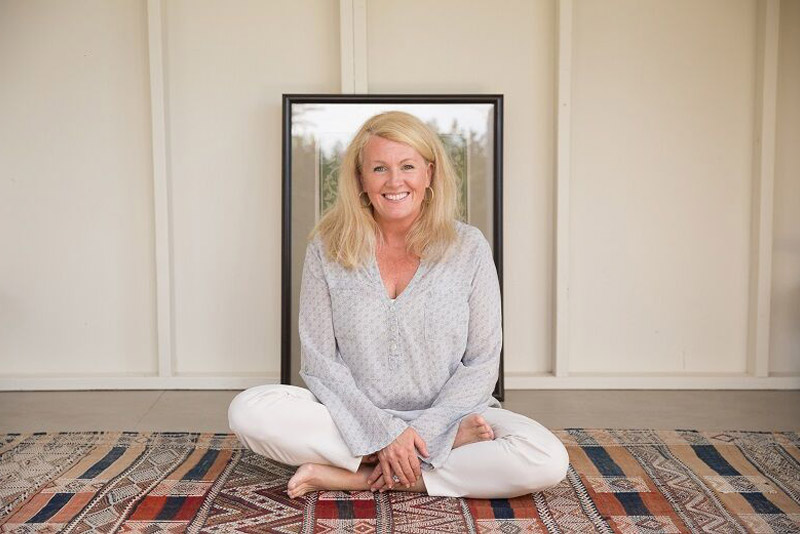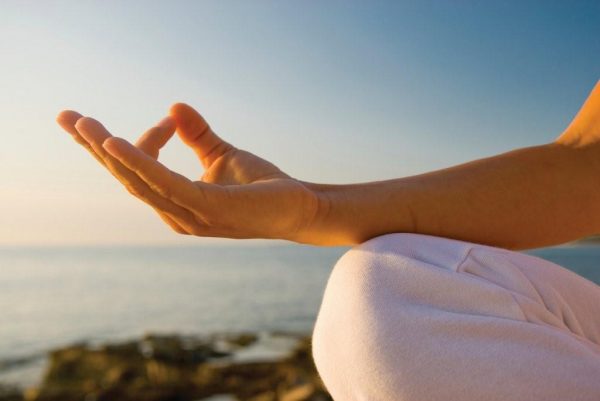What is a Soul-Centered Life?

What is a Soul-Centered Life?
Everyone wants to be happy, free, and fulfilled. And, here’s the thing, we already are – our soul, our being is naturally like that. And it is creative, wise, patient, and loving too. We can rediscover this aspect of ourselves by shifting our awareness back inside, into our inner landscape and creating an internally guided life.
It’s not that you have to sit around and meditate all day, but it’s important to set aside some time for a meditative practice during which you can turn your attention inward, keep your attention on the present moment, and focus on one thing at a time. This will help you to create a connection with your peaceful center point on a regular basis. When you re-establish the internal reference point – the connection to your soul, you’ll become more soul-centered, rather than dependent on outside forces to create your peace. Regular practice is how you become soul-centered, happy, fulfilled, and creative.
When we are very young all of us are basically joyous, free, and engaged with the moment at hand. There is an interconnection with our internal world – with what we feel, think, and desire – as well as with our environment. And this interconnection keeps our attention fully engaged in each moment.
By the time we’re 8 or 10 years old, our focus begins its shift. Instead of easily focusing inwardly on our own sensations, thoughts, and feelings as we had done as younger children, we begin to prioritize the external world with its variety, dynamism, and ever-changing landscape. By prioritizing the external world, our center-point begins its shift and our point of reference becomes the world “out there” and people’s approval, wants, and needs become our focus. This external world charms us as we wait for the next thing to see, to do, or to accomplish, or the next relationship.
So, as we age, not only has our focus made its shift from the internal world to the external world, but the focus also shifts away from the present moment and our innate ability to be fulfilled with what is happening in the moment at hand and the joyous journey of our lives.
The focus becomes the future – waiting for the next moment for fulfillment, aiming to reach our imagined goal, destination, or whatever we perceive will make us happy. We are no longer fulfilled with the moment at hand, and connected to our internal world, or interconnected to that which is animating our life. This causes a subtle, yet persistent, discomfort. And, unfortunately, most of us continue to look externally for ways to address it
Q: You’ve had a pretty extraordinary, spiritual journey – living in a Zen Buddhist monastery, meditating in ashrams, temples throughout India and the Far East – can each of us really accomplish a similar, transformational life in our own ordinary lives?
Funny, when I first learned to meditate, I had this poem from T.S. Elliot cut out and pasted to my wall:
We shall not cease from exploration,
And the end of all our exploring
Will be to arrive where we started,
And know the place for the first time.
My journey took me all over the world. I loved where I went, the people I met, and the experiences I had, and wouldn’t trade it for anything. However, the time I spent on planes, trains, buses, tuk tuks and wagons, hiking and riding my bike throughout the remote areas of the world seeking wholeness, could have been spent exploring my inner terrain at home. You know the saying, Wherever you go, there you are. It’s true.
I was dissatisfied with my life, and I was motivated to find peace and fulfillment out there. What I didn’t know then was that the external world is not where I’d find the answers to many of the questions I traveled with, such as Who am I? What are the mysteries of this life? What do I want? How can I be happy? How can there be peace? I didn’t even imagine that the answers would be found when I quieted my mind, when I shifted my focus internally, and could be had without leaving my room. And know the place for the first time. The place being that inner world.
It was often after some time of silently sitting in meditation that many of the ah-ha moments arrived. A quote from Franz Kafka illustrates what I am suggesting:
‘You do not need to leave your room.
Remain sitting at your table and listen.
Do not even listen, simply wait.
Do not even wait, be quiet, still and solitary.
The world will freely offer itself to you to be unmasked.
It has no choice; it will roll in ecstasy at your feet.
Q: The word transformation seems grandiose – what do you mean by transformation?
Transformation isn’t an exaggeration of reality or an absurd concept, Transformation isn’t an accomplishment, however, transformation is impressive. Transformation unfolds, naturally, you can’t will it. Instead, it has its own timing and intelligence and is guided by intent: like a seed growing into a seedling, a caterpillar becoming a butterfly, a bird hatching out of an egg, a rosebud in fully blooming The difference between making a change and undergoing a transforming is vast: a change can be temporary, and you can will it as you change your hair color or your clothes or your name. You can always change back. But transformation is evolutionary and supported by all things. It’s a one-way street and there is no going back.
Q: And what does it mean to be soul-centered?
I came up with the term “soul-centered” to describe a shift in perspective which meditation cultivates: a transformation of the vantage point for one’s life. I’ve seen it in my students and in my own life. And then came up for a word for it.
For example: how do you answer the question, “How are you?” Many of us look to our external world to determine the response. We base how we’re doing on outside factors such as our relationship status, our work life, our state of health or wellbeing, our financial situation, and sometimes even on worldwide events. With daily meditation, the external world begins to lessen its grip on your attention. Instead, you begin the inward focus and connect to your essence, your awareness, or what some people call “the soul.” Though it’s always been there, your inner world often overshadowed by the external world. Meditation helps you to experience your inner world and how you feel, what you think and who you are – your soul. And you bathe in the soul’s qualities of peacefulness, stillness, creativity, wisdom, acceptance, and more self-awareness on purpose.
With this practice, this soul’s connection becomes more prevalent in your awareness – no longer overshadowed by external conditions. You begin to live with more internal awareness and your soul’s qualities are more dominant. This transforms your perspective. So when you go to answer the question “How are you?” you don’t look toward externals. Instead, your reference point is internal. You check in. This is what being soul-centered means.
Q: What has science taught us about meditation?
Let’s face it, up until recently, science hasn’t really taught us much about meditation, but what it has done is to confirm what meditators have been saying all along: that meditation is good for you! And they’ve done meditation a good service, as this makes meditation more attractive to the general populace: those who may have previously been mystified by meditation and its attraction.
The outer world has been explored and much of it conquered, so as scientists are wont to do, they are finding new frontiers. And it’s now the inner world that has captured their attention. This is due to technology and the ability to measure deeper into the brain.
Years ago it was found that meditation helped with people’s physical issues, lowering their blood pressure, sleeping better, enhancing their immunity, etc. Then, it was found that meditation relieved mental issues like depression, lack of focus, addictions, or decision making. Over the last twenty years or so, the new focus is the brain – or what’s called neuroplasticity. They see that meditation can actually change the physical structure -the gray matter – of the brain. And not only do the changes occur while in meditation, but they last long after the meditation is over. They are finding that the areas of the brain change –the stress-response area of the brain shrinks (the amygdala) and the self-awareness are of the brain increases its folds (the insula). These findings show beyond a doubt the reason people why those who meditate really do experience more compassion, more self-awareness, and less stress.
Q: Throughout your book, you also ask readers to reflect on various questions such as, “Who Am I?” How do inquiry and meditation, together, play a role in transformation?
“Who am I?” is a koan, a question that stops the mind’s rational response. So, if you reflect on this question, instead of responding with reason, you’ll dive into a deeper realm, the realm of being. When you do, you begin to transform the way you see life and the reference point for all activity. Ask yourself, “Who is the one reading this right now? Where does your awareness arise from?” Ask, sit with the questions, and you begin a dialogue with something other than your intellect.
Q: Aside from your book, how can readers learn more about your teachings?
Whether you read the book, listen to my meditations on YouTube, or get personalized instruction with me or one of the teachers I’ve trained, meditation is something that you must practice. And there are so many ways to do it. Fortunately, I have found a few that work for everyone. I haven’t met anyone who can’t meditate. But, meditation only works if you do it, not if you read about it or talk about it. Visit www.McLeanMeditation.com to find out where I’ll be teaching.
Sarah McLean
Sarah McLean is an acclaimed teacher and thought leader who is determined to create more peace on this planet by helping people wake up to the wonder and beauty of their lives and the world around them through the practices of meditation and mindfulness. She inspires audiences everywhere blending the spirit of Zen wisdom with Vedic knowledge and self-inquiry. She helps demystify meditation and makes it accessible to anyone. It was over 30 years ago when she began her daily meditation practice, and moved in to a Transcendental Meditation community. There, she received advanced training in meditation and studied Ayurveda. Since 1993, when she became the education director for Deepak Chopra’s Center for Mind Body Health, she's been teaching contemplative practices and mind/body health. In 1997, she went to India to live in a traditional ashram in India, When she returned to the States, spent two years as a resident trainee in a Zen Buddhist monastery. She fell in love with Self-inquiry and served as the director of Byron Katie's School for the Work. In 2012, she founded the McLean Meditation Institute, home of the Meditation Teacher Academy which certifies meditation and mindfulness teachers through its 300-hour teacher training program. Her bestseller, Soul-Centered: Transform Your Life in 8 Weeks with Meditation, and her most recent book, The Power of Attention: Awakening to Love have received rave reviews. She now lives in Santa Barbara, California where she trains meditation teachers and offers online classes and lives a life she loves.





